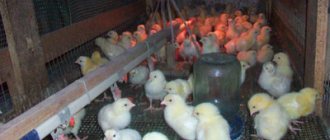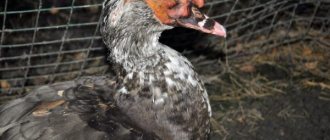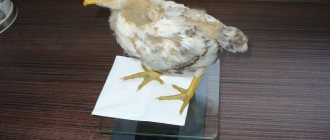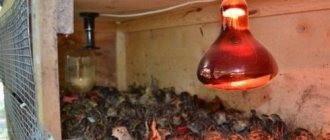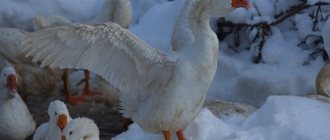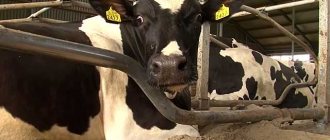Ducks in the country
I want to share with you my experience of keeping ducks in the country!
To be honest, it was scary :-). Living with my grandmother in the village as a child, I watched how she was always doing something with the barn and chicken coop, either feeding or cleaning up after the birds and livestock. Mom was categorically against it, because she believed that in the rhythm of life of city residents, despite the fact that in the summer we live in the country, keeping animals of this kind is simply unrealistic, but my husband and I, looking at the numerous neighbors keeping poultry, decided to take a chance and went to the Leninsky market. We bought 5 pieces “to try”. As it turned out later, we were of course deceived, passing off 2-day-old ducklings as 10-day-old, but they all survived, thanks to the sensitive care of my husband and a warm lamp.
As soon as we got them, they immediately became everyone’s favorites. Mom absolutely changed her categorical “no” to tenderness and joy. Neighbors admired it, passers-by showed their children the ducklings. My dog actually became their nanny. I didn’t leave them the whole time they lived with us, except to eat, take a walk, and at night.
Having read on the Internet, and from my grandmother’s experience, we learned that we need a reservoir. We made a pond. They planted beautiful grass, but it was quickly “trimmed” with beaks. Ducklings love water and swim funny. They are so funny to watch. They eat a lot, we bought feed specifically for ducks. They are also crazy about salad, as my mother noted, they especially love “Lolla Rosa” (which is brown), cucumbers, zucchini, boiled potato peelings - but this is all so pampering, if you want them to actively gain weight, you need to feed them with compound feed constantly. At our dacha there are swamp channels, and there is duckweed there. We were advised to give it more. After all, wild ducks actively feed on it. My mother and I went and collected. I won't go again. I felt like a homeless person, climbing through a swamp with garbage, collecting small green grass; you can’t explain to every passerby what you’re doing there at all.
When keeping ducks, there is no smell if you constantly clean and add sand. The ducks seemed to us to be clean, during the day they all groom themselves, and in the evening they all sat down together to clean their feathers and became white again.
They grew to about 1.5 kg on average; in general, of course, we had to hold them longer, but it was getting cold and we had to move to the city.
The only thing is that we, as city residents, had to overcome ourselves through tears when their time came. This task was completed by my husband, who, by the way, had never lived in a village and had no idea how to do it, and he didn’t have much training.
Here’s my little photo report and we can’t wait to move to the dacha to buy birds; by the way, this year there will also be laying hens and broilers.
This is our first day.
And we built a house for them.
They made a pond for them, which needs to be cleaned, because some of the food from the beak falls into the water and begins to “smell”, especially if it is very hot and the water is warm. As soon as their water was changed, they seemed to understand that it was clean and quickly ran to dive.
In conclusion, I want to say, if the area of your summer cottage allows and you have the desire, don’t hesitate, start one.
Muscovy duck breeding
During the breeding season
Drakes emit a sharp musky smell, which is how this bird got its name. Muscovy duck has other very diverse names. So, in South America it is called Iberian or royal, in the USA, Canada - Brazilian, in Europe - Barbary, Indian, Turkish, in our country - Indian duck, mute duck, warty duck.
The wide distribution that this bird has recently received in our area is quite justified. What is so good about Indian duck? Firstly, tasty, lean dietary meat. It is not as fatty as regular duck, and is more tender and juicy than turkey meat. In addition, it is distinguished by its amazing preservation (shelf life can reach 1-1.5 years, but the taste remains the same). Secondly, the Indian duck is good because it has quite edible eggs, and also because, unlike an ordinary duck, it can, in principle, do without a pond.
Birds of this breed are hardy, practically immune to many infectious diseases, unpretentious to feed and calm. By their nature they are homebodies, so they almost never get lost, they don’t take their chicks far, so you don’t have to be afraid that a bird of prey will attack the duckling. It is not without reason that experienced poultry farmers say that the Indian duck is the most amazing of domesticated birds.
Breeding musk ducks in home gardens and country houses
- a very profitable business. To get the greatest benefit from raising them, it is advisable to keep several duck families - one drake for 2-3 females. The average weight of a drake reaches 5-6 kg, females - up to 3.5 kg. One duckling produces about a hundred eggs per year, each weighing about 70 g. In two months, a duckling can be fattened to 2-2.4 kg.
Muscovy duck eating
much smaller than usual, and very unpretentious in feeding. To gain a unit of weight, she spends significantly less feed than her neighbors in the poultry yard (she consumes 2-2.5 times less feed per day than the Peking one). Ducks of this breed can be successfully grazed like geese and fattened only on green feed. If there is a pond near your summer cottage, the worries of feeding them will be halved. In winter, the bird should not be allowed to swim, although Indian ducks love it. The fact is that they have weak sebaceous glands, so the feathers can freeze and the duck will die. Muscovy ducks do not get along well with other species of birds and never eat together, so it is better to keep them separately in the house. Instead of perches, it is preferable for them to place logs. The soft and warm flooring that they need in the poultry house can be made from pine needles, straw, shavings or other material.
Which breed to choose
Choosing a breed for breeding is where the duck business begins. Before purchasing the first individuals, you need to decide on the purpose of doing business. If an entrepreneur plans to sell only eggs, they choose egg-bearing breeds; only meat breeds are suitable for meat production.
There are several popular breeds that will bring guaranteed profits to the entrepreneur:
- Peking duck breeding. This is one of the most famous meat breeds. Characterized by rapid weight gain and strong immunity. In addition, the bird lays eggs well and can produce up to 100 eggs per year;
- Muscovy duck breeding. An inexpensive, calm bird, lays about 70 eggs and reaches a weight of 2.5 kg at three months of age;
- Breeding mulard ducks. The breed was obtained by crossing Peking and Muscovy ducks. The bird eats grass, so it gains weight slowly.
In order for the duck farm to operate smoothly, the owner must form a breeding herd. Before slaughtering the first batch of young animals, it is necessary to select strong and healthy individuals suitable for reproduction. One drake can fertilize about 5 females. Such a “family” produces up to 75 ducklings per year. To maintain a herd of 300 animals, it is enough to leave 20 females and 4 males.
Ducklings can be hatched in two ways: by hatching and incubating eggs. The first method has a significant drawback - the female does not always show maternal instinct. In the second case, the birth rate of chicks is 90%.
How and where to start raising ducks
The most common meat that can be found in stores is chicken. This is easily explained by the fact that it is easier and more profitable to raise chickens, and the products are more accessible to consumers. Chickens are also common in their backyards; laying hens are raised for eggs, and broilers for meat.
But no less tasty meat and eggs are found in another type of poultry – ducks. It was ducks that were one of the first to be domesticated by our ancestors. They are mainly raised for meat, but small but very tasty eggs are no less valuable.
Where to start breeding ducks: choosing a breed
Before choosing a breed, decide for what purpose you plan to raise ducks - for meat, for eggs, or for both.
The most common breeds in Russia are the Muscovy (Indo) Peking ducks. Birds of these breeds are distinguished by their endurance, rapid growth, unpretentiousness, and adaptability to our climate. For beginning poultry farmers, these breeds are the most optimal.
Muscovy (indocus)
Peking ducks
Basic content rules
Of course, those who decide to start breeding this bird as a business need to be aware of how to care for it. First of all, you should keep in mind that raising ducks for meat at home is a procedure that necessarily requires adherence to a regime. The productivity of the bird directly depends on this. Typically, the following method is practiced on homestead farms:
- In the morning the bird is released into the pond. You can open the duck house no earlier than 10 o'clock. Birds usually lay eggs in the morning.
- After 5-6 hours, the ducks are driven into the paddock for feeding.
- Then they are released back into the pond.
- In the evening before going to bed, the troughs are filled with food again.
At night the birds are driven into the barn. Soon the ducks get used to this routine and themselves come from the pond to the house at feeding time.
Incubator, young or adult birds?
There are three ways to start raising ducks. The first is to buy a hatching egg. To do this, you need an incubator and knowledge of this process. It should be noted that there is a certain risk when breeding in an incubator, and if you have little experience, then first carefully study this issue.
Buying young animals is a more comprehensive method, but also more expensive. Choose healthy ducklings that are at least one week old. Young animals will require special care and food. You can find detailed information on the pages of our magazine.
The third method is the acquisition of adult individuals. It has a number of advantages, including:
- Minimal risk of death;
- Faster growth and production of products (meat, eggs);
- Adult birds do not require any special food.
The only negative is higher financial costs. By the way, if you don’t want to make a mistake with your purchase and want to purchase a healthy, productive bird, then it is better to contact a person who has had experience purchasing ducks. Or study this issue in detail and slowly on the website Ptitsevodu.ru.
Preparing the room
Any breed of duck needs proper maintenance and care. The room for raising poultry should be warm, dry, without drafts. To begin with, you can prepare an old barn or, if possible, build a new poultry house.
The floors in such a room should rise 20-40 cm above the ground, otherwise in cold weather the ducks may get frostbite on their paws. Another condition is bedding; you can use dry hay, straw, and sawdust for it. Try to thoroughly insulate the walls and floor, and also limit the entry of rodents into the house.
The room with ducks should have natural light, so a window is a must. It’s even better if this window can be opened and closed so that the house can be ventilated. The room should not be too hot in summer and not too cold in winter. The minimum temperature in winter is 5 degrees Celsius.
How to properly raise ducks at home: content
For proper cultivation, the poultry house should be equipped with everything necessary. The first step is to make a feeder. You can buy it in a specialized store or make it yourself from boards. All you need is three boards approximately 10-15 cm wide. We knock them together into an oblong trough and cover the ends with scraps. We nail a bar in the center at the top so that the ducks cannot get their paws into the food. The feeder can also be made from plastic sewer pipes.
Duck feeder made from plastic sewer pipe
Ducks need a lot of water, so the first priority is installing a drinking bowl . One individual consumes 0.5-0.7 liters of water per day. You can build drinking bowls yourself or purchase them in a store. The simplest and most inexpensive option is a vacuum drinker, which is a special plate into which an inverted three-liter jar is inserted. Ducks' water should always be clean and fresh.
Another necessary element of the poultry house is nests. They are quite easy to make with your own hands. First, a frame is made, which is then covered with boards. One cell should measure approximately 40 by 40 or 50 by 50 cm. Nests should be installed at a distance of approximately 50-60 cm from the ground. Before entering the cell, a threshold must be installed so that the bird can easily climb in and out of the nest. Three ducks require one cell, so if you have 15 ducks you will need nests with five cells.
How to equip a shed
The Muscovy duck, the breeding of which requires good care, of course, needs not only a convenient poultry house. The barn still needs to be properly equipped. One of the distinctive features of this bird is that it can fly. Therefore, in the poultry house, perches are equipped for such ducks, as well as for chickens. However, in this case they are not placed too high. Of course, feeders and drinkers should be installed. The first ones should be wide enough. The easiest way is to use an old trough for a feeder. More drinking bowls need to be installed in the barn. These birds drink a lot and often.
Breeding Muscovy ducks at home involves, among other things, equipping the poultry house with nests. Every female must have a place to lay and incubate eggs. The easiest way to assemble nests is to use ordinary wooden boxes. You need to pull out a board from their walls, thus creating an entrance for the duck. You can also make more comfortable nests. To assemble them from scratch, boards and timber are usually used.
Raising ducks at home: maintenance and care
Ducks are waterfowl, so in the summer they need some kind of container with water or a pond in which they can swim. If there is a pond or lake nearby, then the problem is solved - the bird will receive not only the conditions necessary for proper development, but also the necessary microelements that are found in natural reservoirs.
In a private backyard, it’s easy to build a small pond yourself by digging a hole in the ground and filling it with concrete. If there is some kind of container, then it can be dug into the ground to such a level that the bird can easily access water. You can make a pool for ducks from old car tires. It is advisable to find a tire from a truck or tractor, cut it lengthwise into two parts and fill it with water. This will create two containers of water.
What should a pond be like?
Sometimes this bird is also kept by land (in cages or aviaries). It is this method that is practiced when ducks are raised for meat in industrial conditions. But for small farms, free range is still considered preferable. The reservoir intended for this bird should have a fairly large area and shallow depth. Ducks dive very well and can get food from the bottom up to 1 m. It is not recommended to build very deep ponds on the site. In this case, duck droppings, sinking to the bottom - where the layers of water do not mix - begin to rot with the release of methane. As a result, the lake “blooms.” In flowing ponds, duck stocking density can be significantly reduced.
